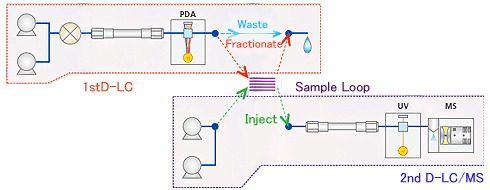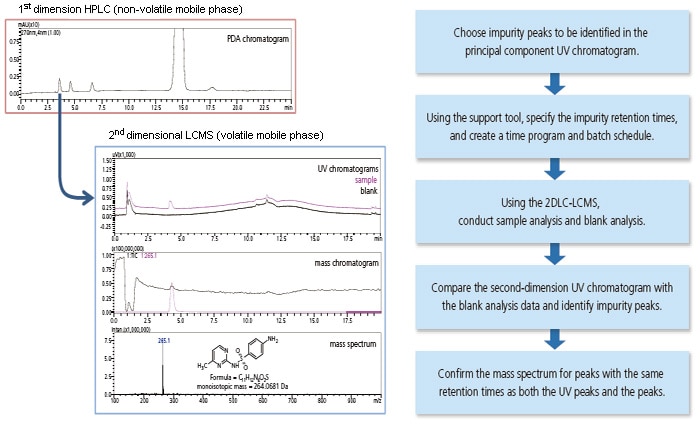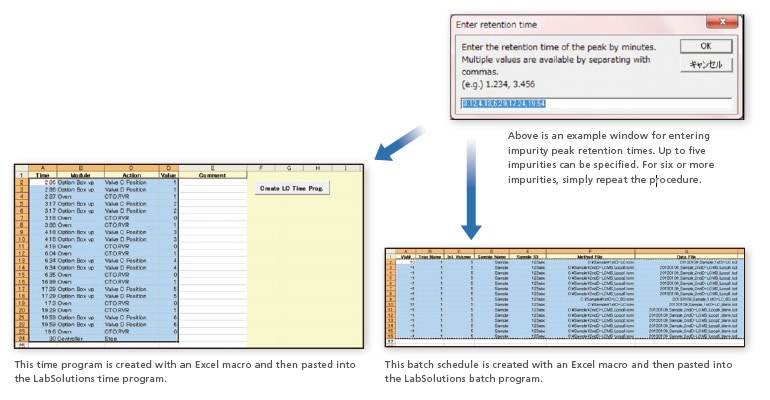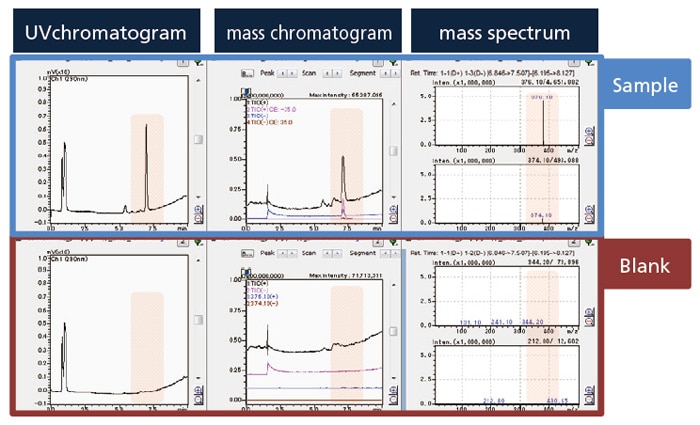Trap-Free 2D LC/MS system for Quadrupole LCMS
Enhancing the Efficiency of Impurity Analysis

Question:
When impurities are detected by UV under non-volatile mobile phase conditions, does one need to adapt the method to use volatile mobile phase additives for LCMS confirmation?
Answer:
With the use of a Trap-free 2D LCMS system, no additional method development is required because mobile phases can be changed online.


- Online switching between a non-volatile mobile phase and a volatile mobile phase
- Convenient support tool coordinated within LabSolutions
- Only the impurities of interest are introduced to the MS system, so there are no concerns about peak misalignment.

Creating a Time Program and Batch Schedule using the Support Tool
The optimal valve sequence can be constructed by entering the retention times for impurity peaks observed in the first-dimension UV chromatogram, and then a batch schedule can be created to acquire data on multiple impurities and their respective blanks.

Using the Data Browser Makes Identification of Impurities Easy

Example of sample data and blank data displayed in the data browser
Remarks and Precautions
- The Trap-Free 2D LCMS System is a application system and is configured with LC units, Quadrupole mass spectrometer, and start kit
News / Events
-
Shimadzu has released the LCMS-8065XE
The new LCMS-8065XE is a triple-quadrupole mass spectrometer with EVOLVED, EFFICIENT, and EXACT capabilities. These exceptional capabilities ensure high reliability and enhanced productivity, empowering the laboratory for the future.
-
Latest issue of Shimadzu Journal, featuring Environmental Analysis, has come out.
This issue showcases advanced technologies and research tackling the global challenges posed by PFAS. As part of Shimadzu’s ongoing commitment to sustainability and problem solving, we strive to reduce environmental impacts and build a better future.
-
New High Resolution Accurate Mass Library for Forensic Toxicology
Perform forensic toxicology screening for drugs of abuse, psychotropic drugs, pharmaceuticals, pesticides, and natural toxins using this high-resolution accurate mass database.
-
Shimadzu has released the Shim-vial™ H glass, S glass.
Shimadzu provides high-quality vials that thoroughly eliminate these risks by visually inspecting each vial, allowing them to be used with confidence.
-
INTERNATIONAL MASS SPECTROMETRY CONFERENCE 2024
Visit the Shimadzu booth at the International Mass Spectrometry Conference (IMSC) 2024.
-
Metabolomics 2024
Shimadzu Lunch Presentation at Metabolomics 2024
Date: June 20th, 2024 (Thursday)
Time: 12:25 – 1:25 p.m.


